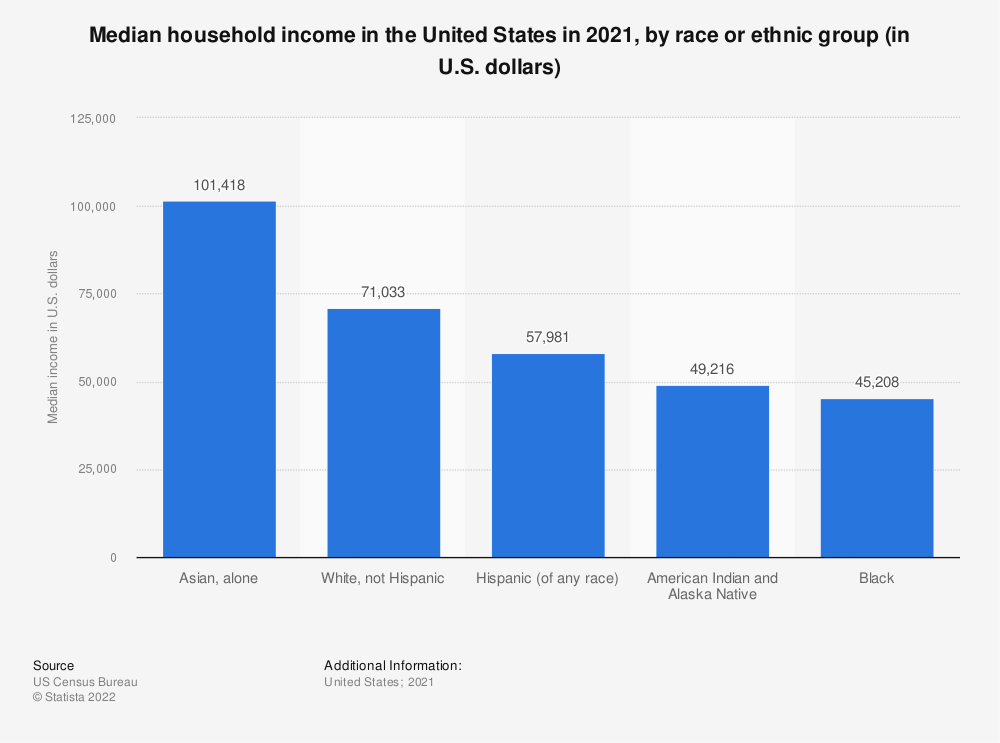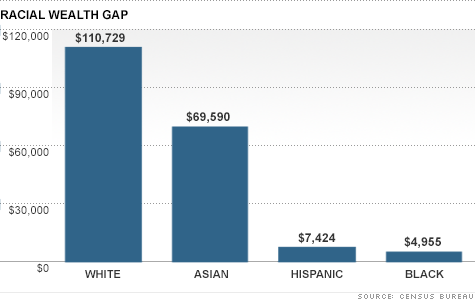Studies have revealed that race has a direct impact on social stratification. In the United States, historical injustices have transformed into systemic discrimination that negatively affects African Americans and other minority groups. Clair (2020) explains that the challenges that some of these minority groups go through start at the earliest stages of their lives. There is a disproportionately high number of poor black families across the country. Children in such families cannot afford to go to some of the best private schools in the country. If they excel in high school, they are unable to attend top colleges because their families cannot afford the fees, and their race does very little to help in such situation. It means that such individuals start their life at a position of disadvantage.
When it comes to employment, race plays a major role in defining one’s income. Given the fact that blacks have relatively worse educational background than whites because of challenges mentioned above, they are more likely to get lower salaries. Some of them are forced to work for minimum wages because those are the opportunities available to them. Even when an African American is more qualified than a white for a well-paying job, Barr (2019) explains that a firm is more likely to hire a white. Figure 1 below shows the median household income in the country in 2021. Blacks earn the least while whites and Asians earn the highest.

The type of jobs that is available for the blacks pay so poorly, which explains why their median household income is lowest of all the racial groups. The researcher was also interested in determining the racial wealth gap to confirm the claim that African Americans are disadvantaged. Figure 1 below shows the average wealth in the United States by race. It shows that the average wealth of blacks is 4.47% that of whites in the country. It reaffirms the claim that race has a direct relationship with one’s social class in this country.

Various sociological concepts can help understand the genesis of the relationship between race and class. One of the popular concepts that have been used to explain this relationship is racism. According to Rattansi (2020) racism refers to discrimination and prejudice against a person or a community based on the belief that different races have varying qualities, characteristics, and capabilities. In the United States, there is an inherent belief that whites are superior to blacks primarily because of the difference in skin color. Although such beliefs are not true, they form the foundation why whites are more likely to be offered better employment opportunities. Dunn (2019) explains that such misconceptions have been used to deny African Americans the best opportunities in college and in workplaces. The problem is that some employers are so convinced about these misleading beliefs that they are unwilling to offer blacks an opportunity to prove their worth. Others feel that their organization can only be acceptable to a wider audience in the country if it is represented by whites.
Social stratification is another concept that can help in explaining the class gap between people of different races. Kohn (2019) defines social stratification as a way of ranking people in the society in terms of power, prestige, or wealth. The United States abolished slavery on December 6, 1865, about 157 years ago (Bulla, 2020). At that time, whites were at the top of the social strata as they were the owners of means of wealth creation. At the bottom of the pyramid were the blacks, who at that time were slaves. Although slavery and slave trade was abolished in the country, nothing was done to change the social stratification that had developed. To the contrary, there have been deliberate measures taken, some of which are government policies and practices such as police brutality and unfair justice system, meant to disenfranchise blacks and ensure that they remain at the bottom of the social strata. Although they are no longer slaves, their race makes it difficult to rise to the same class as whites.
The United States can only achieve true peace and tranquility in its social system if race is viewed as a normal and unavoidable factor in a diversified community that should not be considered a divisive factor. The concept of social change can help in addressing this historical problem in the country. Dunn (2019) defines social change as an alteration of a society’s social order, which include a change in social behavior, social relations, and in social institutions. It starts by acknowledging that there is a challenge in the current system that requires a change. The American society should acknowledge that the current relationship between race and class is a problem that needs to be addressed. The society should then find ways of bridging the gap and ensuring that every citizen has equal access to opportunities. Strategies used should promote social cohesion as opposed to approaches that entrench divisiveness in the country.
References
Barr, D. A. (2019). Health disparities in the United States: Social class race ethnicity and the social determinants of health. Johns Hopkins University Press.
Bulla, D. W. (2020). Why slavery endures its past present and future. Cambridge Scholars.
Clair, M. K. (2020). Privilege and punishment: How race and class matter in criminal court. Princeton University Press.
Dunn, A. (2019). Holistic healing: Theories practices and social change. Canadian Scholars.
Kohn, M. L. (2019). The development of a theory of social structure and personality. Union Bridge Books.
Luhby, T. (2012). Worsening wealth inequality by race. CNN Money. Web.
Rattansi, A. (2020). Racism: A very short introduction. Oxford University Press.
Statista. (2022). Median household income in the United States in 2021, by race or ethnic group (in U.S. dollars). Statista. Web.